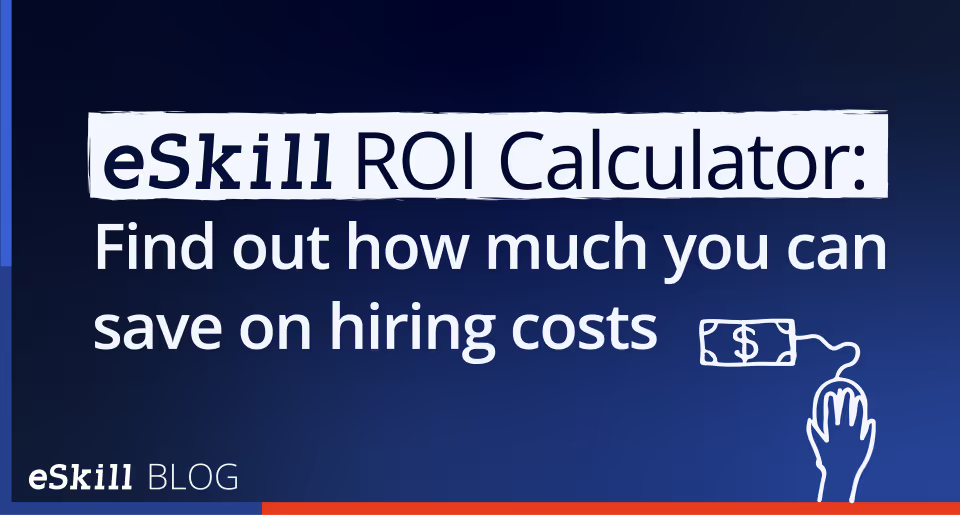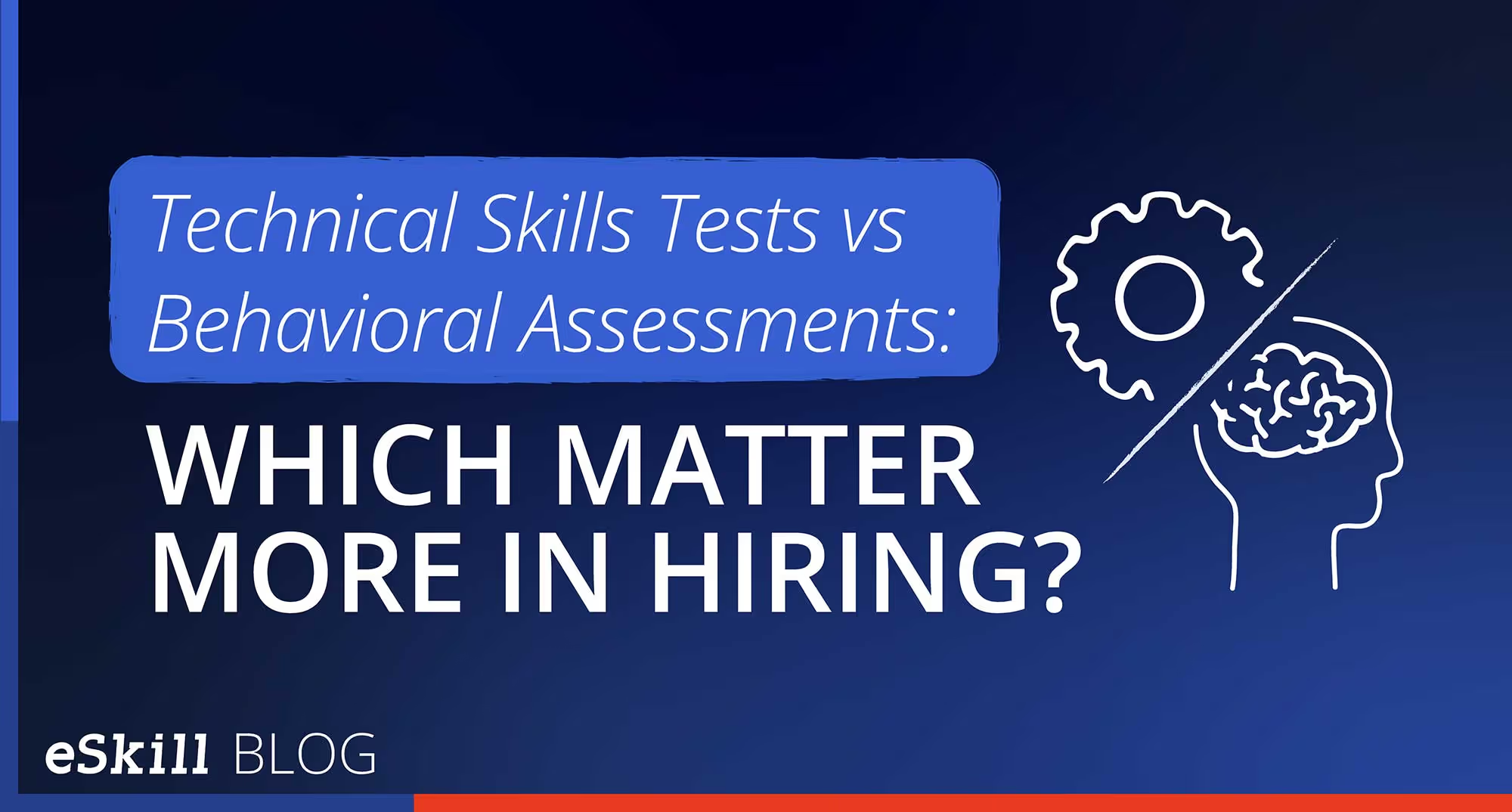According to the Society for Human Resources Management (SHRM), 82% of companies use pre-employment competency tests, and the number is growing. They previously used them to hire executive and mid-level leadership positions but now also use them for hourly and entry-level jobs.
Business leaders know a strong team is essential to success. However, because many candidates lack the skills employers require, hiring qualified employees is easier said than done. According to a Korn Ferry report, there is an international talent shortage of more than 85 million people, and 77% of employers say they are having difficulty finding qualified candidates.
Since hiring has become so challenging, business leaders need solutions that take the guesswork out of hiring. They want to ensure they hire the top candidates who can help them meet growth goals while minimizing the risk of hiring errors.
Many organizations see pre-employment aptitude testing as the solution, and they are implementing industry-leading assessment solutions like the eSkill Talent Assessment PlatformTM to improve hiring and employee development outcomes.
Why Pre-Employment Competency Tests Are Important
HR teams use pre-employment aptitude tests to ensure candidates have the required skills and experience for a job and are a good fit for the company culture. These are some common types of pre-employment competency tests:
- Skills Tests: HR professionals use skills tests to measure applicants’ technical proficiency while evaluating them for positions in customer service, software development, marketing, accounting, operations, and manufacturing.
- Simulations: Simulations questions mimic job situations and enable hiring managers and HR teams to see how candidates will perform on the job.
- Cognitive Assessments: Cognitive assessments show HR and hiring managers how well candidates can assimilate information and whether they can learn on the job.
- Behavioral Assessments: Skills and abilities are one piece of the puzzle, but job fit also matters. Hiring teams use behavioral assessments to determine whether candidates’ behaviors and motivations align with their corporate values.
How Pre-Employment Aptitude Testing Improves Employee Development
Business leaders often find that the best person for the job already works at the company. So, instead of posting jobs, they look internally for candidates who can fill newly created roles.
Companies are also launching upskilling and reskilling programs to build a talent pool of promotable candidates. Google, Wal-Mart, Verizon, McDonald’s, and Marriott International have invested billions in upskilling programs to enable employees to improve existing skills, pursue a college degree, and learn new skills. Amazon offers training programs as part of its Upskilling 2025 initiative that supports employees as they gain the expertise they need to move into more highly skilled roles.
There are some ways pre-employment competency tests help organizations improve employee development and manage upskilling and reskilling.
- Facilitate Goal Setting: Insights that managers and HR leaders derive from pre-employment aptitude tests enable them to align goals and objectives with staff development needs and organizational objectives.
- Recognize Rising Stars: Pre-employment aptitude tests help managers and HR teams identify top performers who are ready for new challenges so they can groom them for leadership roles.
- Pinpoint Skill Gaps: HR professionals use pre-employment competency tests to determine where employees need further training to succeed in their current jobs and define development needs so they can provide appropriate training.
- Retain Top Employees: Around 71% of employees will leave a job if their company does not take an interest in their personal and career development. High performers are also likely to stay if they see promotion and growth opportunities. Pre-employment aptitude testing helps you nurture top employees’ growth so you don’t lose them to competitors.
Use Pre-Employment Competency Tests to Improve Hiring and Employee Development
Companies in every industry use assessments to improve the quality of hire and enhance employee development efforts. Here are some examples of eSkill clients who did.
- Encore Exchange, a medical billing service, implemented pre-employment aptitude testing and decreased applicant screening time by 67% and time-to-hire by 33%. The company also improved the quality of recruiting organization-wide.
- Charger Logistics, a commercial transportation company, reduced hiring costs by 30%, time-to-hire by 33%, and increased employee retention to 95% when it started using pre-employment competency tests.
- TaskUs, a global business outsourcing company, provides digital and customer services that help companies protect and grow their brands. Once it implemented pre-employment aptitude testing, TaskUs improved its quality of hire and reduced turnover by 25% across its call centers.
- AdventHealth, a healthcare staffing agency, uses pre-employment competency tests to identify knowledge gaps, create customized training programs for new hires, and familiarize new employees with the company’s processes and procedures.
- ELIA Transmission Belgium, a national high-voltage electricity transmission system operator, improved the efficiency of its testing process and increased the number of candidates it tests daily by 25% when it implemented pre-employment aptitude testing.
- ServCorp, a shared space and resources leasing company, uses pre-employment competency tests to identify skills gaps in new hires and current staff so it can support their career and growth goals.
Get Started with Pre-Employment Competency Tests
You need to hire employees who can help you grow your business, as well as retain top employees once you find them. Implementing a comprehensive pre-employment aptitude testing program can help you accomplish both of these goals.
Do you want to learn how pre-employment competency tests can help you hire top employees and avoid losing them? Contact us to request a demo.

Get ademo.






